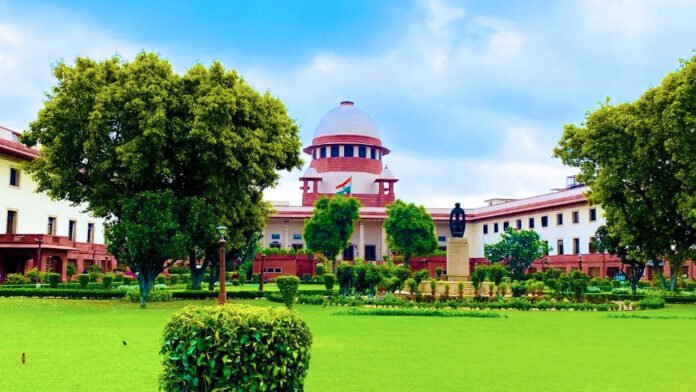Court Rules Construction Sites as Public Places under Motor Vehicles Act
In a landmark judgment on Monday, the High Court of Karnataka ruled that construction sites, although privately owned, must be regarded as ‘public places’ under the Motor Vehicles Act. This ruling, delivered by Justice Hanchate Sanjeev Kumar, came in response to an appeal by an insurance company, which sought to avoid liability for compensation related to a tragic accident at a construction site. The decision has significant implications for the understanding of private and public spaces in legal terms, especially when it comes to motor vehicle accidents and insurance claims.
The case dates back to November 14, 2011, when a brick-laden truck reversed into a construction site located on Beguru-Koppa Road in Bengaluru. As workers rested within the compound, the truck struck Devendra Eligar, resulting in his death. The victim’s family pursued justice through the Motor Accident Claims Tribunal (MACT) in Bengaluru, which awarded a compensation of Rs 11.5 lakh, along with 6% interest, in February 2014. However, the insurance company contested the ruling, arguing that the contractor’s plant policy did not cover third-party risks, and the incident occurred in a private space, not a public place.
The insurance firm contended that as the accident took place within the confines of a construction site, it should not be classified under the Motor Vehicles Act, which covers public areas accessible to the general populace. They argued that the claim could not be considered valid as the site was not a ‘public place’ in the traditional sense. However, Justice Sanjeev Kumar disagreed, pointing out that construction sites, while privately owned, remain accessible to a wide range of individuals, including workers, supervisors, engineers, and other personnel involved in loading, unloading, and transporting materials. This accessibility, which extends throughout the construction process, creates a unique intersection between private and public space, particularly before the site becomes exclusively occupied by the property owner after construction.
Reinterpreting Public Space in Urban Areas
In his judgment, Justice Kumar referenced Section 2(34) of the Motor Vehicles Act, which defines a ‘public place’ as an area that is accessible to the general public, including employees and contractors working on private properties. The court emphasised that the construction site, even though owned by a private entity, should be considered a public place as it serves as a hub for numerous individuals who are not part of the private ownership but are essential to the construction process. This new interpretation challenges traditional views of private property and redefines the legal status of construction sites within urban spaces.
This ruling has broader implications, particularly for urban planning and liability issues within rapidly growing cities like Bengaluru. As construction activities become a key part of city development, the lines between private and public spaces continue to blur. The verdict could set a precedent for similar cases, influencing how accidents occurring in accessible private spaces are viewed in terms of liability and insurance coverage. For insurance firms, this ruling may require a re-evaluation of policies and a more expansive view of coverage for incidents occurring in such spaces.
Sustainability and Safety in Urban Construction Projects
From a sustainability perspective, the court’s decision also raises important questions about safety and liability in urban construction projects. In rapidly developing cities, where space is often limited, construction sites are frequently located in areas that are also used by the public, or at least by workers and temporary employees. The risk of accidents in such environments is high, and the new ruling underscores the need for stringent safety measures. The sustainability of urban development hinges not only on the environment but also on the safety of individuals who contribute to the development process.
As cities like Bengaluru continue to expand and undergo significant infrastructure projects, the necessity for clear and effective safety protocols becomes evident. The courts have now paved the way for better protection of workers and passers-by alike, ensuring that accidents within construction sites are viewed through the lens of public liability. This case highlights the growing importance of ensuring that urban development projects are not only environmentally sustainable but also safe for all individuals who are involved, directly or indirectly, in the construction process.
Legal Reforms in Construction Site Liability
This ruling also signals the need for broader legal reforms in how urban infrastructure and development projects are handled, particularly regarding public safety and the protection of workers. In many cases, construction sites are temporary but have a profound impact on the urban landscape. Clear legal frameworks that consider both public accessibility and private ownership are necessary to ensure a balance between development and public safety. The court’s decision may prompt changes in how businesses, contractors, and property owners approach safety protocols and insurance, ensuring that both workers and the general public are protected under the law.



